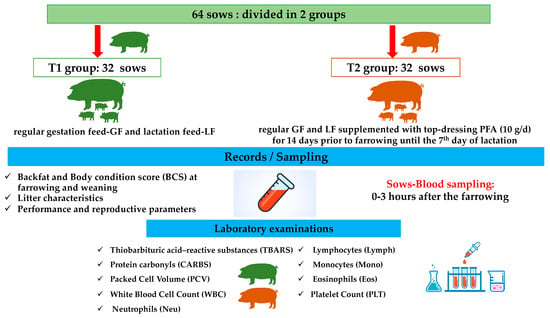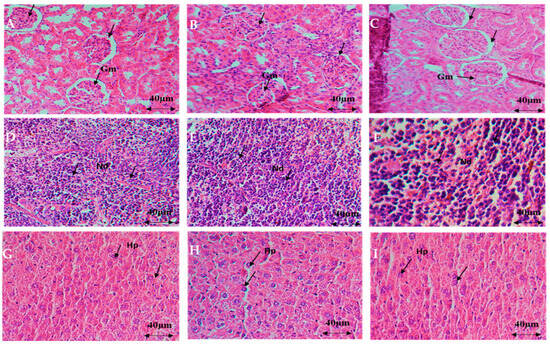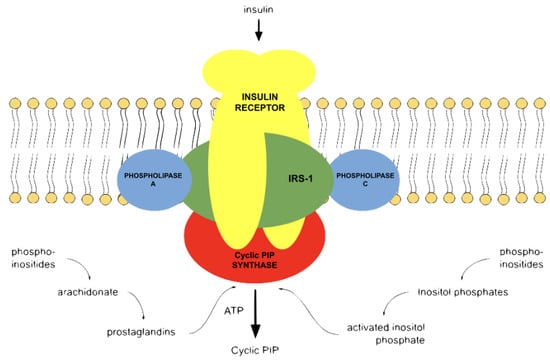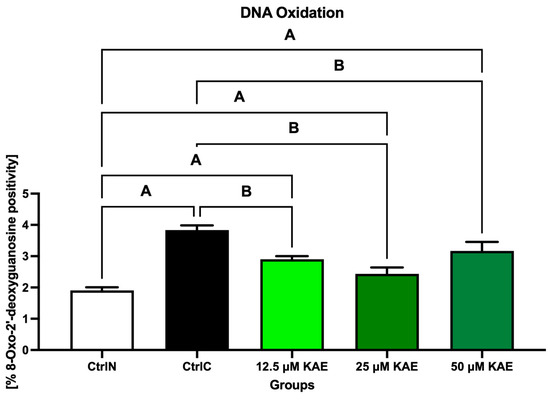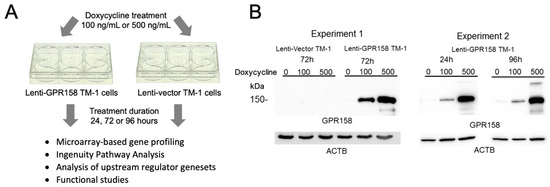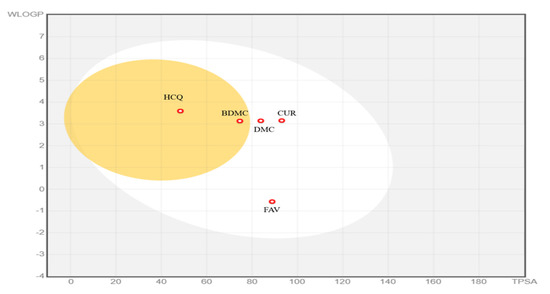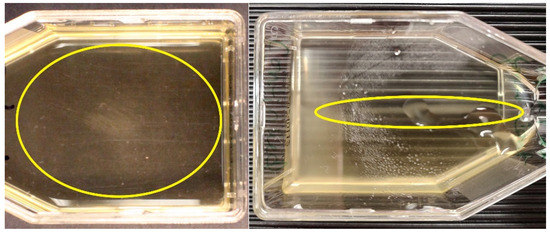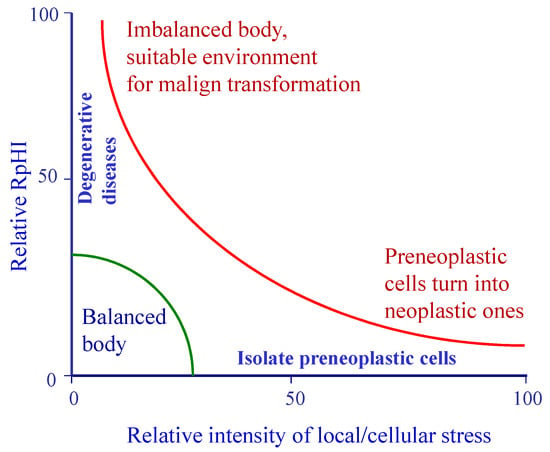Feature Papers in Human and Animal Stresses
Share This Topical Collection
Editors
 Dr. Aleksandra Buha Djordjevic
Dr. Aleksandra Buha Djordjevic
 Dr. Aleksandra Buha Djordjevic
Dr. Aleksandra Buha Djordjevic
E-Mail
Website
Collection Editor
Department of Toxicology “Akademik Danilo Soldatović”, University of Belgrade-Faculty of Pharmacy, 11000 Belgrade, Serbia
Interests: toxicology; endocrine disrupting chemicals; mixtures; human health risk assessment; chemical carcinogenesis
Special Issues, Collections and Topics in MDPI journals
Topical Collection Information
Dear Colleagues,
This Topical Collection, entitled “Feature Papers in Human and Animal Stresses”, welcomes the submission of reviews and original research articles that reflect experimental and interventional trials aimed at mitigating the impacts of an extensive range of environmental stressors, including physical (noise, heat), biological (virus, parasites), chemical (heavy metals, microplastics, pesticide/herbicides) and metabolic (oxidative Stress, osmotic stress, nutritional stress). Whilst research on interventions designed to enhance developmental and reproductive outcomes is particularly encouraged, studies that focus on the impact of interventions targeting other health outcomes are also welcome. Investigations in humans, animals, and cell culture are also encouraged, and human studies may be cross-sectional, case–control or intervention trials. We look forward to your contribution to this exciting collection, attending to the latest advances in the research domain of human and animal stresses.
Dr. Aleksandra Buha Djordjevic
Dr. Elisa Bona
Collection Editors
Manuscript Submission Information
Manuscripts should be submitted online at www.mdpi.com by registering and logging in to this website. Once you are registered, click here to go to the submission form. Manuscripts can be submitted until the deadline. All submissions that pass pre-check are peer-reviewed. Accepted papers will be published continuously in the journal (as soon as accepted) and will be listed together on the collection website. Research articles, review articles as well as short communications are invited. For planned papers, a title and short abstract (about 100 words) can be sent to the Editorial Office for announcement on this website.
Submitted manuscripts should not have been published previously, nor be under consideration for publication elsewhere (except conference proceedings papers). All manuscripts are thoroughly refereed through a single-blind peer-review process. A guide for authors and other relevant information for submission of manuscripts is available on the Instructions for Authors page. Stresses is an international peer-reviewed open access quarterly journal published by MDPI.
Please visit the Instructions for Authors page before submitting a manuscript.
The Article Processing Charge (APC) for publication in this open access journal is 1000 CHF (Swiss Francs).
Submitted papers should be well formatted and use good English. Authors may use MDPI's
English editing service prior to publication or during author revisions.
Published Papers (20 papers)
Open AccessArticle
Thermal Stress as a Critical Factor in the Viability and Duration of Spittlebug Eggs
by
Milena Duarte, Luís Augusto Calsavara and Alexander Machado Auad
Viewed by 267
Abstract
The spittlebug
Mahanarva spectabilis (Distant, 1909) (Hemiptera: Cercopidae) is an important pest that causes significant losses in the production of forage crops for cattle feed. Information on the thermal requirements of this insect during the egg stage is crucial in assessing the interaction
[...] Read more.
The spittlebug
Mahanarva spectabilis (Distant, 1909) (Hemiptera: Cercopidae) is an important pest that causes significant losses in the production of forage crops for cattle feed. Information on the thermal requirements of this insect during the egg stage is crucial in assessing the interaction between insects and forage. The aim of this research was to evaluate the effects of constant and oscillating (diurnal/nocturnal) temperatures on the viability of
M. spectabilis eggs and the duration of the egg stage. Temperatures of 20 °C to 30 °C were ideal for the development of this insect pest, resulting in greater viability and faster development of the embryos. In addition, it should be noted that a variation of up to 8 days is feasible for synchronizing the phenological stages of the forage plants and the eggs to be laid on these plants when subjected to 30 °C (16.6 days) or 20 °C (25.7 days) without significantly altering the viability of the eggs. Notably, a temperature oscillation of 25 °C during the day and 15 °C at night increased the viability of the eggs after exiting diapause. These results are essential for the rearing of
M. spectabilis in the laboratory, allowing for the supply of eggs for experiments and contributing to advances in studies aimed at developing effective integrated management strategies for this pest.
Full article
►▼
Show Figures
Open AccessArticle
The Presence of a Pet Dog Is Associated with a More Balanced Response to a Social Stressor
by
Jaci Gandenberger, Aurélie Ledreux, Ashley Taeckens, Kerry Murphy, Jenni Forkin, Anah Gilmore and Kevin N. Morris
Viewed by 1049
Abstract
Acute and chronic stress each have physical manifestations in the human body that can lead to many negative health impacts. Today, reported stress levels worldwide are at an all-time high, spurring the search for non-pharmaceutical interventions to maintain healthy stress levels. In this
[...] Read more.
Acute and chronic stress each have physical manifestations in the human body that can lead to many negative health impacts. Today, reported stress levels worldwide are at an all-time high, spurring the search for non-pharmaceutical interventions to maintain healthy stress levels. In this study, we examined whether a pet dog’s presence influences healthy adults’ acute stress responses as assessed through self-reports, heart rate, plasma cortisol, and salivary alpha-amylase. Participating pet dog owners were randomly assigned to undergo the Trier Social Stress Test either with their pet dog or alone. While there was no group difference in perceived anxiety levels, participants undergoing the acute psychological stressor with their pet dogs present had significantly lower heart rates, lower plasma cortisol responses, and higher salivary alpha-amylase responses than people without their dogs. Those who participated without their dogs had a statistically flat alpha-amylase response, which is typically associated with extreme or pathological stress. These findings extend the potential effects of pet dogs beyond merely lowering their owner’s stress levels to maintaining a healthier, balanced response across the sympathoadrenal medullary axis and hypothalamic–pituitary-adrenal axis.
Full article
►▼
Show Figures
Open AccessReview
Vascular NADPH Oxidases and Atherothrombotic Stroke
by
Javier Marqués and Guillermo Zalba
Viewed by 487
Abstract
Oxidative stress constitutes a main molecular mechanism underlying cardiovascular diseases (CVDs). This pathological mechanism can be triggered by NADPH oxidases (NOXs), which produce reactive oxygen species (ROS). In fact, the different NOXs have been associated with myocardial infarction, atherothrombosis, and stroke. More specifically,
[...] Read more.
Oxidative stress constitutes a main molecular mechanism underlying cardiovascular diseases (CVDs). This pathological mechanism can be triggered by NADPH oxidases (NOXs), which produce reactive oxygen species (ROS). In fact, the different NOXs have been associated with myocardial infarction, atherothrombosis, and stroke. More specifically, we will focus on the implications of NOXs in atherothrombotic stroke. Each NOX member participates in a different way in the several stages of this disease: endothelial dysfunction, immune cell infiltration, foam cell genesis, vascular smooth muscle cells (VSMC) proliferation, and atherosclerotic plaque formation. Additionally, some NOXs are involved in plaque instability, thrombosis, ischemic stroke, and ischemia-reperfusion injury (IRI). Interestingly, the effects of NOXs in this pathology depend on the specific homolog, the cell type in which they are activated, and the stage of the disease. In this review we summarize the most up-to-date information about the implications of vascular NOXs in each of these processes. Finally, we highlight some limitations and future perspectives on the study of NOXs in CVDs.
Full article
►▼
Show Figures
Open AccessArticle
Dynamics of Stress Biomarker in Cliff Divers during Official Competition
by
Mia Perić, Vladimir Pavlinović, Nikola Foretić, Zoran Nikolovski and Dario Vrdoljak
Viewed by 422
Abstract
Stress is defined as a reaction of the body to any given stressor, external or internal. These stressors are common among participants in sports. Therefore, this study aimed to determine the dynamics of two stress biomarkers during an official cliff diving competition. The
[...] Read more.
Stress is defined as a reaction of the body to any given stressor, external or internal. These stressors are common among participants in sports. Therefore, this study aimed to determine the dynamics of two stress biomarkers during an official cliff diving competition. The sample of participants included six professional cliff divers (three females and three males). Their salivary cortisol (C) and alpha-amylase (AA) samples were collected during a 3-day competition (four samples on day 1 and six samples on days 2 and 3). The analysis of the results showed a non-significant increase in AA from day one to day three. On the other hand, C has an increase in the first two days (0.58 ± 0.16 µg/mL–0.61 ± 0.23 µg/mL) and then a decrease in the last competition day (0.53 ± 0.23 µg/mL). Analysis of samples collected during each day demonstrates a fluctuation of the biomarkers. For AA, the sample after the training dive on the 2nd day has the highest value (326.34 ± 280.73 U/mL), whereas on day 3, the samples after training and before the competition dive are the highest (364.50 ± 287.13 U/mL; 466.49 ± 218.39 U/mL). Regarding C levels, the sample after the competition dive tends to show the highest values (0.66 ± 0.17 µg/mL; 0.89 ± 0.29 µg/mL; 0.76 ± 0.32 µg/mL, respectively). Furthermore, the correlation between the results of competition and biomarkers is not significant. These results demonstrate how cliff diving competition tends to have a high impact on the sympathetic nervous system, as observed mainly in AA dynamics. One might contend that even though there is no significant physical strain, cliff divers demonstrate heightened stress biomarker levels that could affect their performance and focus while diving.
Full article
►▼
Show Figures
Open AccessReview
Endoplasmic Reticulum Stress Signaling in the Regulation of Hepatic Pathological Responses
by
Ananda Baral
Viewed by 1102
Abstract
The endoplasmic reticulum (ER) is a vital cell organelle that is primarily involved in the processes of protein folding, maintenance of intracellular calcium storage and lipid synthesis in order to maintain cellular homeostasis. To achieve this meticulous order, several ER-dependent processes have to
[...] Read more.
The endoplasmic reticulum (ER) is a vital cell organelle that is primarily involved in the processes of protein folding, maintenance of intracellular calcium storage and lipid synthesis in order to maintain cellular homeostasis. To achieve this meticulous order, several ER-dependent processes have to be in unison and perfect harmony. However, a persistent supply of newly synthesized proteins strains the ER mainly due to the accumulation of unfolded proteins, thus ultimately leading to an imbalance termed ER stress. Although the accumulation of misfolded proteins is a frequent reason for the initiation of ER stress, it is also induced by the hyper-production of reactive oxygen species, aberrant calcium leakage from the ER and due to the effect of cytokines. ER stress signals are conveyed via three arms of ER, namely PERK, IRE1 and ATF6. Signal transduction form these signaling molecules often converges on the transcriptional upregulation of CHOP and its related signaling mechanisms. If the ER stress is unresolved, then it can lead to cell death through different cell death mechanisms, including apoptosis, proptosis, etc. In the liver, it has been observed that ER stress plays a critical role in hepatic damage under different experimental conditions. This review highlights the role of ER stress in liver pathologies.
Full article
►▼
Show Figures
Open AccessArticle
Environmental Cadmium Exposure Induces an Increase in Systolic Blood Pressure by Its Effect on GFR
by
Soisungwan Satarug, David A. Vesey, Supabhorn Yimthiang, Tanaporn Khamphaya, Phisit Pouyfung and Aleksandra Buha Đorđević
Viewed by 1021
Abstract
Chronic exposure to the nephrotoxic metal pollutant, cadmium (Cd), has been associated with hypertension, but the mechanism by which it raises blood pressure is not understood. We hypothesize that exposure to Cd reduces the glomerular filtration rate (GFR), which in turn causes a
[...] Read more.
Chronic exposure to the nephrotoxic metal pollutant, cadmium (Cd), has been associated with hypertension, but the mechanism by which it raises blood pressure is not understood. We hypothesize that exposure to Cd reduces the glomerular filtration rate (GFR), which in turn causes a rise in blood pressure. Data were collected from 447 Thai subjects with a mean age of 51.1 years, of which 48.8% had hypertension, 15.4% had diabetes, and 6.9% had an estimated GFR (eGFR) below 60 mL/min/1.73 m
2 (low eGFR). More than half (58.8%) and 23.9% had moderate and severe tubular proteinuria, respectively. The mean blood and urinary Cd concentrations were 2.75 and 4.23 µg/L, respectively. Doubling of body burden of Cd increased the prevalence odds ratios (POR) for low eGFR and severe tubular proteinuria 41% and 48%, respectively. The POR for hypertension rose twofold in those with blood Cd levels of 0.61–1.69 µg/L or urinary Cd excretion levels ≥ 0.98 µg/g creatinine. In the hypertensive group, the eGFR was inversely associated with age (β = −0.517), the Cd excretion rate (β = −0.177), and diabetes (β = −0.175). By mediation analysis, an increase in SBP was attributable totally to the effect of Cd on GFR. Thus, blood pressure appeared to rise as GFR fell. This finding is consistent with the well-known role of the kidney in long-term blood pressure regulation, and explains a universally high prevalence of hypertension among patients with low eGFR.
Full article
►▼
Show Figures
Open AccessCommunication
Cell-Type-Specific Effect of Innate Immune Signaling on Stress Granules
by
Prem Prasad Lamichhane, Aditi, Xuping Xie and Parimal Samir
Viewed by 1021
Abstract
Stress granules (SGs) are cytoplasmic membraneless compartments that can form in stressed cells. There is an intricate relationship between SGs and innate immune signaling pathways. A previous study reported that the innate immune signaling mediated by Toll-like receptors (TLRs) can inhibit SGs induced
[...] Read more.
Stress granules (SGs) are cytoplasmic membraneless compartments that can form in stressed cells. There is an intricate relationship between SGs and innate immune signaling pathways. A previous study reported that the innate immune signaling mediated by Toll-like receptors (TLRs) can inhibit SGs induced by endoplasmic reticulum stress (ER stress) in bone-marrow-derived macrophages (BMDMs) and the chemotherapy drug oxaliplatin in B16 melanoma cells. We wanted to test if this observation can be generalized to other cell types. First, we recapitulated the results from the previous study showing TLR signaling-mediated inhibition of SGs in BMDMs induced by ER stress. However, SGs formed in response to ER stress were either not inhibited or only very weakly inhibited by TLR4 stimulation in human lung cancer-derived A549 cells, murine immortalized mouse lung fibroblasts (iMLFs) and primary murine mouse lung fibroblasts. This correlated with a weak induction of IKK complex kinase activity by TLR4 stimulation in these cells. SGs formed by sodium arsenite treatment also remained unaffected by TLR4 signaling. Our results indicate that the innate immune signaling-mediated inhibition of SGs is cell-type-dependent, thus opening a new avenue for mechanistic studies of the crosstalk between innate immune and stress signaling pathways.
Full article
►▼
Show Figures
Open AccessArticle
Exploring Serum Copeptin and Hematological Profile: A Comparative Analysis after Intradermal versus Intramuscular Porcine Reproductive and Respiratory Syndrome Virus Vaccination in Piglets
by
Georgios Maragkakis, Eleni G. Katsogiannou, Georgios I. Papakonstantinou, Laskarina-Maria Korou, Serafeim C. Chaintoutis, Panagiotis Konstantopoulos, Despoina N. Perrea, Georgios Christodoulopoulos, Labrini V. Athanasiou and Vasileios G. Papatsiros
Viewed by 927
Abstract
This study aimed to investigate the impact of intradermal (ID) and intramuscular (IM) vaccination with a porcine reproductive and respiratory syndrome virus (PRRSV)-modified live vaccine (MLV) in piglets on serum copeptin levels and hematological profile. This study included 104 suckling piglets (2 weeks
[...] Read more.
This study aimed to investigate the impact of intradermal (ID) and intramuscular (IM) vaccination with a porcine reproductive and respiratory syndrome virus (PRRSV)-modified live vaccine (MLV) in piglets on serum copeptin levels and hematological profile. This study included 104 suckling piglets (2 weeks of age) from a commercial farrow-to-finish pig farm suffering from positive unstable PRRSV status. Animals were assigned to four groups, with two replicates (13 piglets/group/replicate); group A: IM vaccination with a PRRSV MLV vaccine, group B: ID vaccination with the same vaccine, group C: ID of Diluvac Forte, and group D: IM of Diluvac Forte. Blood samples were collected from the same three pigs/group/replicate at 4, 7, and 10 weeks of age. Blood samples were used for the performance of the complete blood count, and they were also examined by PCR for PRRSV and by ELISA for copeptin. No significant differences in serum copeptin levels and the number of blood cell counts (packed cell volume—PCV, numbers of white blood cells—WBCs, and platelets number—PLTs) were noticed in the same group over time and among groups. In conclusion, it seems that the vaccination against PRRSV does not affect the levels of the released copeptin. Based on our results, the measurement of serum copeptin could not be proposed as a potential stress biomarker in pigs.
Full article
Open AccessReview
The Science Behind Stress: From Theory to Clinic, Is Basal Septal Hypertrophy the Missing Link between Hypertension and Takotsubo Cardiomyopathy?
by
Boran Çağatay, Fatih Yalçin, Adnan Kıraç, Nagehan Küçükler and Maria Roselle Abraham
Viewed by 1052
Abstract
The modern theory of stress, initially proposed by Hans Selye in 1956, signifies an important development in our understanding of this phenomenon. Selye’s
The Stress of Life serves as a foundational book for subsequent scientific questions. In this article, we focus on a
[...] Read more.
The modern theory of stress, initially proposed by Hans Selye in 1956, signifies an important development in our understanding of this phenomenon. Selye’s
The Stress of Life serves as a foundational book for subsequent scientific questions. In this article, we focus on a comprehensive look at stress and use a literature review to explain its theoretical foundations as well as its clinical equivalent. Our research focuses on the complex mechanisms of stress, with a particular emphasis on the consequences of cardiac remodeling and adaptation processes. Myocardial remodeling might be seen as a response to increased stress in acute or chronic situations. Stressed heart morphology (SHM) is a very interesting description representing basal septal hypertrophy (BSH), which is detectable in both acute emotional stress and chronic stress due to increased afterload in hypertension. Acute stress cardiomyopathy (ASC) and hypertension in the same individuals could be clinically linked. Also, in this report, we mention the geometric and functional similarity of the left ventricle (LV) septal base in both acute and chronic clinical situations. Therefore, cardiac imaging methods are crucial to assessing LV segmental aspects in ASC patients. We propose a new paradigm that ASC may develop in hypertensive patients with SHM. We document the segmental progression of microscopic LV remodeling using a third-generation microscopic ultrasound and note that BSH takes a longer time to occur morphologically than an acutely developed syndrome. However, the majority of ASC events have a predominant base, and the absence of segmental remodeling details, including BSH and cardiac decompensation with apical ballooning, on echocardiographic reports may mask the possible underlying hypertensive disease. In fact, beyond ASC cases, previously undiagnosed hypertension is very common, even in developed countries, and is associated with masked target organ damage.
Full article
►▼
Show Figures
Open AccessArticle
Gene and Protein Expression of Placental Nutrient-Stress Sensor Proteins in Fetal Growth Restriction
by
Elizabeth Morgan, Grace Chung, Seokwon Jo, Briana Clifton, Sarah A. Wernimont and Emilyn U. Alejandro
Viewed by 1512
Abstract
Fetal growth restriction (FGR) and low birth weight increase the risk of non-communicable diseases such as type 2 diabetes and heart failure in adulthood. Placental insufficiency is widely considered a major contributor to FGR. Two crucial placental proteins involved in nutrient and stress
[...] Read more.
Fetal growth restriction (FGR) and low birth weight increase the risk of non-communicable diseases such as type 2 diabetes and heart failure in adulthood. Placental insufficiency is widely considered a major contributor to FGR. Two crucial placental proteins involved in nutrient and stress sensing—O-linked N-acetylglucosamine transferase (OGT) and mechanistic target of rapamycin (mTOR) kinase—play roles in post-translational protein modification and protein translation, influencing cellular growth and metabolism in response to maternal stress, hypoxia, and nutritional status in the placenta. In our study, we examined the gene and protein profiles of OGT and mTOR in FGR and control placentae, comparing those appropriate for gestational age (AGA), while also considering potential confounding effects of fetal sex and delivery mode. Our findings revealed no significant differences in gene expression, protein levels, or activity of OGT, OGA, mTOR, or their associated markers between female AGA and FGR cesarean placentae, nor between female AGA and male AGA cesarean placentae. Additionally, the mode of delivery in female AGA placentae did not affect the levels or activity of these proteins. Overall, our study did not observe significant differences in nutrient sensor protein expression after stratifying by FGR, sex, and delivery mode. Nevertheless, these unbiased results provide a more comprehensive understanding of the complexities of placental gene expression involving OGT and mTOR.
Full article
►▼
Show Figures
Open AccessArticle
Effects of a Phytogenic Feed Additive on Redox Status, Blood Haematology, and Piglet Mortality in Primiparous Sows
by
Vasileios G. Papatsiros, Georgios I. Papakonstantinou, Eleni Katsogiannou, Dimitrios A. Gougoulis, Nikolaos Voulgarakis, Konstantinos Petrotos, Sofia Braimaki, Dimitrios A. Galamatis, Amr El-Sayed and Labrini V. Athanasiou
Cited by 1 | Viewed by 1177
Abstract
This study aimed to investigate the effects of a polyphenolic phytogenic feed additive (PFA) based on plant extracts, such as
Embelia officinalis,
Ocimum sanctum and nut fibre, on the redox status, haematological parameters, and piglet mortality in sows. A total of 64
[...] Read more.
This study aimed to investigate the effects of a polyphenolic phytogenic feed additive (PFA) based on plant extracts, such as
Embelia officinalis,
Ocimum sanctum and nut fibre, on the redox status, haematological parameters, and piglet mortality in sows. A total of 64 primiparous sows were divided into two groups: T1-control group: regular gestation (GF) and lactation feed (LF), T2 group: regular GF and LF supplemented with a PFA (10 g daily) for 14 days before and 7 days after the farrowing. Blood samples were collected 0–3 h after farrowing. Haematological parameters (Packed Cell Volume/PCV, White Blood Cells/WBC, Platelets/PLTs) were counted in blood smears. Thiobarbituric acid reactive substances (TBARS) and protein carbonyls (CARBS) levels were determined in sow plasma. The performance and reproductive parameters of sows at farrowing and weaning days were recorded. The mean numbers of PCV and PLT counts in the T2 group were higher in comparison to the T1 group (
p = 0.041,
p = 0.033, respectively). In contrast, the mean numbers of WBC and neutrophils were almost significantly higher in the T2 group (
p = 0.051). The mean number of stillborn piglets was significantly higher in the T1 group (2.12) compared to the T2 group (1.03). The mean number of alive piglets 24 h after farrowing and the mean number of the weaned piglets were significantly higher in group T2 (13.9 vs. 15.4 and 12.6 vs. 14.3). Sows in group T2 had significantly more backfat at weaning than the sows in group T1 (13.3 vs. 12.7). The mean levels of CARBS (nmol/mL) and TBARS (μmol/L) in group T1 (24.8 and 18.7) were significantly higher in comparison to group T2 (18.3 and 14.9). In conclusion, the use of a polyphenolic PFA in sows has beneficial effects on their welfare and performance due to its antioxidative effects. Furthermore, PFAs appear to exert antithrombotic, anti-inflammatory, and protective effects on PLTs, WBCs, and RBCs, respectively.
Full article
►▼
Show Figures
Open AccessArticle
The Toxicological and Pharmacological Evaluation of the Anacyclus pyrethrum Aqueous Extract: Implications for Medicinal and Therapeutic Applications
by
Abdelmounaim Baslam, Rachida Aboufatima, Hamid Kabdy, Samia Boussaa, Abderrahman Chait and Marouane Baslam
Cited by 2 | Viewed by 1561
Abstract
Plants have long been valued for their medicinal and nutritional contributions to human life.
Anacyclus pyrethrum, a member of the Asteraceae family, has attracted increasing attention as a source of natural products with diverse applications. In this study, we explored the toxicity
[...] Read more.
Plants have long been valued for their medicinal and nutritional contributions to human life.
Anacyclus pyrethrum, a member of the Asteraceae family, has attracted increasing attention as a source of natural products with diverse applications. In this study, we explored the toxicity and pharmacological properties of the aqueous extract of
A. pyrethrum (AEAP). The acute toxicity study involved groups of mice subjected to oral administration of varying doses of AEAP, with immediate post-administration observations to detect any signs of toxicity or mortality. Comprehensive biochemical and hematological analyses encompassed assessments of renal function. The pharmacological profile was assessed by evaluating antinociceptive, anxiolytic, and antidepressant effects, which were measured using the hot plate test, elevated plus maze, open field test, and forced swim test, respectively. Different doses (100, 200, 400, and 800 mg/kg) were administered to rats via gavage for this assessment. The results revealed that the acute toxicity demonstrated the safety of AEAP at the tested doses, with no observed mortality or significant alterations. Moreover, it revealed that AEAP possesses an LD
50 value greater than 5000 mg/kg. The pharmacological properties of AEAP demonstrated anxiolytic and antidepressant activities at a dose of 200 mg/kg, while no antinociceptive effect was observed. These findings underscore the potential of
A. pyrethrum as a natural source of bioactive compounds with therapeutic applications. Further research is needed to explore long-term and chronic effects for a comprehensive assessment.
Full article
►▼
Show Figures
Open AccessArticle
Analysis of Stress Predictors in Vaquejada Horses Running with Different Interval Rest Periods
by
Clarisse S. Coelho, Ticiane R. P. Sodré, Lara N. Sousa, Thadeu M. Silva, Joana Simões, Vinicius R. C. Souza, Renata F. Siqueira and Helio C. Manso Filho
Viewed by 1135
Abstract
The purpose of this study was to assess the stress responses associated with
vaquejada simulating tests (VSTs). Ten clinically healthy 8.9 ± 4.3-year-old Quarter horses, weighing 441.3 ± 25.0 kg, performed two VSTs five days apart. In the first VST (M1), animals ran
[...] Read more.
The purpose of this study was to assess the stress responses associated with
vaquejada simulating tests (VSTs). Ten clinically healthy 8.9 ± 4.3-year-old Quarter horses, weighing 441.3 ± 25.0 kg, performed two VSTs five days apart. In the first VST (M1), animals ran three times with a 5-min rest between races; and in the second (M2), they ran with a 15-min rest between races. Horses were examined before (T0) and immediately after the third run (T1) and at 4 h (T2) of recovery. Stress biomarkers included heart rate (HR), heart rate variability (HRV), cortisol, and white blood cell count. All variables were analyzed by ANOVA and Tukey tests, considering
p < 0.05. A significant reduction in cortisol was observed for pull (
p = 0.0463) and helper (
p = 0.0349) horses when they had a 15-min rest between races. The rMSSD and mean R-R values for helper horses were also significantly lower in M2. In conclusion, the 15-min rest interval proved to be better than the 5-min period for both categories of equine athletes used in
vaquejada mainly for helper horses. A longer rest time between races allowed the organic recovery necessary for these animals to impose a greater applied physical effort load, which is a fact that guarantees good performance and well-being.
Full article
Open AccessReview
Insulin Resistance Develops Due to an Imbalance in the Synthesis of Cyclic AMP and the Natural Cyclic AMP Antagonist Prostaglandylinositol Cyclic Phosphate (Cyclic PIP)
by
Heinrich K. Wasner
Cited by 2 | Viewed by 1196
Abstract
The reasons initiating insulin resistance are not identified. Various metabolic derailments have been characterized. These are the outcome and not the initiation of insulin resistance. In animal models of type 2 diabetes and hypertension, a decreased hormonal stimulation of the synthesis of the
[...] Read more.
The reasons initiating insulin resistance are not identified. Various metabolic derailments have been characterized. These are the outcome and not the initiation of insulin resistance. In animal models of type 2 diabetes and hypertension, a decreased hormonal stimulation of the synthesis of the cyclic AMP antagonist prostaglandylinositol cyclic phosphate (cyclic PIP) was determined. The resultant imbalance of the action of cyclic AMP and cyclic PIP shifts metabolic regulation to the dominance of catabolism and a decrease in imperative anabolism. This dominance develops gradually since the more cyclic AMP dominates, the more the synthesis of cyclic PIP will be inhibited. Vanishing actions of cyclic PIP are its 10-fold activation of glucose uptake in adipocytes, its inhibition of insulin release from pancreatic β-cells, its inhibition of PKA and its 7-fold activation of protein ser/thr phosphatase. Reduced synthesis of cyclic PIP results from (a) decreased substrate availability, (b) long-time elevated cyclic AMP levels resulting from stress overloads and (c) aging and the gradual decrease in the synthesis of hormones which likely maintain mechanisms that stimulate cyclic PIP synthesis. The need is to discover which hormones, such as growth hormone, insulin-like growth factor-1, dehydroepiandrosterone, and testosterone, are involved in maintaining the stimulation of cyclic PIP synthesis.
Full article
►▼
Show Figures
Open AccessArticle
Kaempferol Enhances Sperm Post-Thaw Survival by Its Cryoprotective and Antioxidant Behavior
by
Štefan Baňas, Filip Benko, Michal Ďuračka, Norbert Lukáč and Eva Tvrdá
Cited by 4 | Viewed by 1249
Abstract
This study examined the effects of three selected doses of kaempferol (KAE; 12.5, 25 or 50 μM) on bovine sperm motility and oxidative profile directly related to cold storage. We also elucidated the effect of KAE on the expression profiles of heat shock
[...] Read more.
This study examined the effects of three selected doses of kaempferol (KAE; 12.5, 25 or 50 μM) on bovine sperm motility and oxidative profile directly related to cold storage. We also elucidated the effect of KAE on the expression profiles of heat shock proteins (HSPs) 70 and 90 as well as the pro-apoptotic BCL2-associated X (BAX) protein and the anti-apoptotic B-cell lymphoma 2 (Bcl-2) protein. Frozen samples supplemented with KAE were compared with a native control (fresh spermatozoa) and a cryopreserved control, frozen in the absence of KAE. Our results demonstrate that the administration of all KAE doses led to a higher degree of sperm motility (
p < 0.05) when compared with the cryopreserved control. The highest levels of protection of sperm DNA (
p < 0.05), lipids (
p < 0.05) and proteins (
p < 0.05) were detected in samples exposed to 25 μM KAE when compared with samples frozen without KAE. Administration of 25 μM KAE led to a significant increase in HSP70 and HSP90 (
p < 0.05) when compared with the unsupplemented frozen control. No significant differences were observed in the expression patterns of BAX; however, a significant up-regulation of Bcl-2 protein was observed in the frozen samples enriched with 25 μM KAE when compared with the cryopreserved control (
p < 0.05). In summary, we may consider KAE as an effective agent in stabilizing the sperm membranes by preventing reactive oxygen species (ROS) overproduction in the mitochondria and subsequent oxidative damage to molecules critical for a proper sperm architecture and function. These protective properties of KAE may lead to higher post-thaw sperm activity and viability.
Full article
►▼
Show Figures
Open AccessArticle
Regulatory Effects of GPR158 Overexpression in Trabecular Meshwork Cells of the Eye’s Aqueous Outflow Pathways
by
Maria Fernanda Suarez, Tatsuo Itakura, Satyabrata Pany, Shinwu Jeong, Shravan K. Chintala, Michael B. Raizman, Steven Riesinger, Tsvetelina Lazarova, José Echenique, Horacio M. Serra, W. Daniel Stamer and M. Elizabeth Fini
Viewed by 1480
Abstract
Elevated intraocular pressure (IOP), the major risk factor for glaucoma, is caused by decreased outflow through the trabecular meshwork (TM). The pathophysiology of ocular hypertension has been linked to stress pathways, including fibrosis, calcification and the unfolded protein response (UPR). In a pharmacogenomic
[...] Read more.
Elevated intraocular pressure (IOP), the major risk factor for glaucoma, is caused by decreased outflow through the trabecular meshwork (TM). The pathophysiology of ocular hypertension has been linked to stress pathways, including fibrosis, calcification and the unfolded protein response (UPR). In a pharmacogenomic screen, we previously identified the novel G-protein-coupled receptor (GPCR), GPR158, showed that expression is upregulated in TM cells by glucocorticoid stress hormones, and showed that overexpression protects against oxidative stress. We also found that loss of
Gpr158 in knockout mice negates IOP reduction due to treatment with the catecholamine stress hormone, epinephrine. An increase in GPR158 would be expected to alter the activity of GPR158-regulated pathways. Here, we profiled gene expression changes due to
GPR158 overexpression by microarray, then conducted pathway analysis. We identified five upstream stress regulators relevant to ocular hypertension: dexamethasone and TGFB1 (fibrosis), XBP1 and ATF4 (UPR), and TP53 (cell cycle arrest). Key genes in the first three pathways were downregulated by
GPR158 overexpression, but not enough to inhibit dexamethasone-induced fibrosis or calcification in TM cells, and loss of
Gpr158 in knockout mice only minimally protected against dexamethasone-induced ocular hypertension. Depending on dose,
GPR158 overexpression down- or upregulated the TP53 pathway, suggesting the mechanism for previously observed effects on cell proliferation. A sixth upstream regulator we identified was a GPCR: the beta-adrenergic receptor ADRB1. Adrenergic receptors serve as targets for IOP-lowering drugs, including epinephrine. These data provide new information about pathways regulated by GPR158.
Full article
►▼
Show Figures
Open AccessArticle
Paradigm of Well-Orchestrated Pharmacokinetic Properties of Curcuminoids Relative to Conventional Drugs for the Inactivation of SARS-CoV-2 Receptors: An In Silico Approach
by
Akhileshwar Kumar Srivastava, Divya Singh, Priya Yadav, Monika Singh, Sandeep Kumar Singh and Ajay Kumar
Cited by 1 | Viewed by 1250
Abstract
To cure SARS-CoV-2 infection, the repurposing of conventional antiviral drugs is currently advocated by researchers, though their action is not very effective. The present study, based on in silico methods, was intended to increase the therapeutic potential of conventional drugs: hydroxychloroquine (HCQ), favipiravir
[...] Read more.
To cure SARS-CoV-2 infection, the repurposing of conventional antiviral drugs is currently advocated by researchers, though their action is not very effective. The present study, based on in silico methods, was intended to increase the therapeutic potential of conventional drugs: hydroxychloroquine (HCQ), favipiravir (FAV), and remdesivir (REM) by using curcuminoids like curcumin (CUR), bisdemethoxycurcumin (BDMC), and demethoxycurcumin (DMC) as adjunct drugs against SARS-CoV-2 receptor proteins, namely main protease (Mpro) and the S1 receptor-binding domain (RBD). The curcuminoids exhibited similar pharmacokinetic properties to the conventional drugs. The webserver (ANCHOR) predicted greater protein stability for both receptors with a disordered score (<0.5). The molecular docking study showed that the binding energy was highest (−27.47 kcal/mol) for BDMC toward Mpro receptors, while the binding energy of CUR (−20.47 kcal/mol) and DMC (−20.58 kcal/mol) was lower than that of HCQ (−24.58 kcal/mol), FAV (−22.87 kcal/mol), and REM (−23.48 kcal/mol). In the case of S1-RBD, CUR had the highest binding energy (−38.84 kcal/mol) and the lowest was in FAV (−23.77 kcal/mol), whereas HCQ (−35.87 kcal/mol) and REM (−38.44 kcal/mol) had greater binding energy than BDMC (−28.07 kcal/mol) and DMC (−30.29 kcal/mol). Hence, this study envisages that these curcuminoids could be employed in combination therapy with conventional drugs to disrupt the stability of SARS-CoV-2 receptor proteins.
Full article
►▼
Show Figures
Open AccessArticle
Surprising Effects of Rocking Motion on Leishmania tarentolae Behavior in Culture and Implications for Cell Stress
by
Linda M. Ferrence, Akshata Gajula and Marjorie A. Jones
Cited by 2 | Viewed by 1178
Abstract
Leishmania are an understudied genus of parasitic protozoans causing significant health problems for people, particularly in tropical climates. To better understand the growth of
Leishmania and potential drug sensitivity implications, the effects of motion on cells grown in vitro were probed. Using a
[...] Read more.
Leishmania are an understudied genus of parasitic protozoans causing significant health problems for people, particularly in tropical climates. To better understand the growth of
Leishmania and potential drug sensitivity implications, the effects of motion on cells grown in vitro were probed. Using a stock
Leishmania tarentolae cell culture, cells were placed in 10 mL of a Brain–Heart Infusion medium in either a non-moving (static) environment or on a flat platform of one of two lab rockers (set at a minimal speed) in a dark environment for 13 days. Also, the addition of 0.5 M of L-Proline was evaluated. Microscopy, cell clumping, cell viability, and secreted acid phosphatase (SAP) activity data were collected. Results show that a constant slow rocking motion changed cell growth, clumping behavior, and detectable SAP activity relative to the no-motion cultures, but this change was dependent on which rocker was used, indicating a complexity in the growth of these cells in culture. Thus, continuous motion affects the stresses placed on the cells during a growth curve under some conditions. The implications of this study lead to questions about the effects of motion on the efficacy of pharmaceutical testing in vitro. Further study of the effects of motion on
Leishmania is important.
Full article
►▼
Show Figures
Open AccessArticle
Impacts of Maternal Noise Exposure on Risk of Stillbirth and Oxidative Stress-Induced Neurobehavioral Changes in Offspring
by
Archana Arjunan, Dhiraj Kumar Sah and Ravindran Rajan
Viewed by 1409
Abstract
Life does not start at birth but at conception. Embryonic development is a particularly difficult period in which genetic and environmental factors can interact to contribute to risk. In utero and early neonatal exposure to maternal stress are linked with psychiatric disorders, and
[...] Read more.
Life does not start at birth but at conception. Embryonic development is a particularly difficult period in which genetic and environmental factors can interact to contribute to risk. In utero and early neonatal exposure to maternal stress are linked with psychiatric disorders, and the underlying mechanisms are currently being elucidated. This study examined novel relationships between maternal noise exposure causing oxidative-stress-induced neurobehavioral changes in cognition and autism spectrum disorder (ASD) in offspring. Pregnant
Wistar albino rats were exposed to noise (100 dBA/4 h). There were three groups of pregnant rats exposed to noise during gestation, as well as a control group: early gestational stress (EGS), which occurs between the 1st and 10th days of pregnancy; late gestational stress (LGS), which occurs between the 11th day and the delivery day; and full-term gestational stress (FGS), which occurs during the entire pregnancy period. Maternal stress effects on the offspring were analyzed. This study observed that noise exposure becomes a psychosocial stressor in the prenatal period of motherhood. In the EGS and LGS groups, female rats showed continuous midterm abortion and stillbirth during noise exposure. The noise-exposed group exhibited significant changes in cognition, obsessive–compulsive behavior, fear, and anxiety. Corticosterone and oxidative stress markers increased, and the antioxidant level was significantly decreased in the noise-exposed group. Therefore, maternal noise exposure causes recurrent abortions and stillbirths, increases oxidative stress, and impairs the offspring’s neurodevelopment.
Full article
►▼
Show Figures
Open AccessReview
Multifactorial Distress, the Warburg Effect, and Respiratory and pH Imbalance in Cancer Development
by
Gabi Drochioiu
Cited by 4 | Viewed by 1724
Abstract
Oncogenes are thought to play an important role in aberrant regulation of growth factors, which is believed to be an initiation event of carcinogenesis. However, recent genetic and pharmacological studies have shown that the Warburg effect (WE) is needed for tumour growth. It
[...] Read more.
Oncogenes are thought to play an important role in aberrant regulation of growth factors, which is believed to be an initiation event of carcinogenesis. However, recent genetic and pharmacological studies have shown that the Warburg effect (WE) is needed for tumour growth. It refers to extensively studied aerobic glycolysis over the past decade, although its impact on cancer remains unclear. Meanwhile, a large body of evidence has indicated that oxidative stress (OS) is connected with the occurrence and progression of various forms of cancer. Psychosocial factors (PSF), such as chronic depression, sadness, stressful life experiences, stress-prone personality, and emotional distress or poor quality of life affect the immune system and contribute to cancer outcomes. Here, we examine the relationship between WE, OS, PSF, metal ions, other carcinogens, and the development of different cancers from the viewpoint of physiological and biochemical mechanisms.
Full article
►▼
Show Figures














